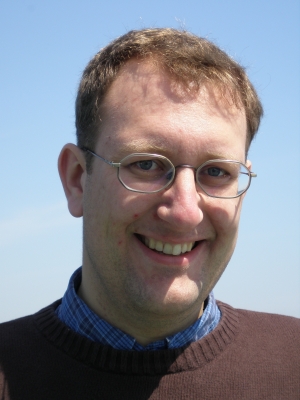
 Christoph Pfrommer
Christoph Pfrommer
- wish to extend and deepen their understanding of theoretical physics;
- are interested in astronomy and astrophysics; or
- (intend to) carry out a masters thesis or Ph.D. dissertation on an
astronomical or astrophysical subject.
- In this class, we will follow the instructional strategy of a "flipped classroom"
(also called "inverted classroom"), which is a type of blended learning focused on
student engagement and active learning.
- The lecture notes are available as
a
 PDF file. If you
find any typos or mistakes, please drop me a note.
PDF file. If you
find any typos or mistakes, please drop me a note.
- There will be weekly reading assignments, questions on the content (see below) and exercises that help
you to prepare the class for the upcoming week. Please upload your answers to
this moodle
page (reading assignment questions weekly, exercises bi-weekly).
- The class meets in person every Wednesday, 14:15 - 15:45 in room 2.28.2.011
(starting October 18, 2023) and the exercises take place every second Thursday,
16:15 - 17:45 in room 2.24.0.29 (starting October 19, 2023). During the class, we will
discuss the topic of the week, do some order of magnitude problems, and I will show some
more lengthy derivations. Ideally, I would appreciate if you brought a lot of input so
that we can have an active discussion with many questions on our topic of galaxy
clusters and theoretical astrophysics.
- Assignment for lecture 2 - due Oct 24, 202.
- Assignment for lecture 3 - due Oct 31, 2023.
- Assignment for lecture 4 - due Nov 7, 2023.
- Assignment for lecture 5 - due Nov 14, 2023.
- Assignment for lecture 6 - due Nov 21, 2023.
- Assignment for lecture 7 - due Nov 28, 2023.
- Assignment for lecture 8 - due Dec 5, 2023.
- Assignment for lecture 9 - due Dec 12, 2023.
- Assignment for lecture 10 - due Dec 19, 2023.
- Assignment for lecture 11 - due Jan 9, 2024.
- Assignment for lecture 12 - due Jan 16, 2024
- Assignment for lecture 13 - due Jan 23, 2024.
- Assignment for lecture 14 - due Jan 30, 2024.
- Assignment for lecture 15 - due Feb 6, 2024.
- Exercise 1 - due Oct 31, 2023.
- Exercise 2 - due Nov 14, 2023.
- Exercise 3 - due Nov 28, 2023.
- Exercise 4 - due Dec 12, 2023.
- Exercise 5 - due Jan 9, 2024.
- Exercise 6 - due Jan 23, 2024.
- Exercise 7 - due Feb 6, 2024.
- Overview and background:
- What is a galaxy cluster? Insights from observations at various wavelengths
- Why are clusters interesting?
Tools for cosmology and laboratories for high-energy and plasma astrophysics
- What is a galaxy cluster? Insights from observations at various wavelengths
- Evolution of the dark component:
- When do clusters form? ⇒ statistics and power spectra
- Where do cluster form? ⇒ non-linear evolution
- How do clusters form? ⇒ spherical collapse model
- How many clusters are there? ⇒ Press-Schechter mass function
- What is the structure of a cluster? ⇒ halo density profiles, virial masses
- When do clusters form? ⇒ statistics and power spectra
- Evolution of the baryonic component:
- Non-radiative physics
- Adiabatic Processes and Entropy
- Basic Conservation Equations
- Buoyancy Instabilities
- Vorticity and Turbulence
- Shocks and jump conditions
- Entropy generation by accretion and hierarchical merging
- Scaling relations (ideal and real)
- Adiabatic Processes and Entropy
- Radiative physics
- Radiative cooling and star formation
- Energy feedback (supernovae, active galactic nuclei)
- Transport processes of gas:
conduction, thermal stability (without and with magnetic fields)
- Radiative cooling and star formation
- Non-thermal processes
- Non-thermal radio emission
- Origin and transport of magnetic fields, magneto-hydrodynamic turbulence
- Acceleration of cosmic rays (to first and second order), transport equation
- Non-thermal radio emission
- Non-radiative physics
- Cluster astrophysics and cosmology:
- Optical: galaxy properties and virial theorem
- Transforming galaxy populations: tidal effects, dynamical friction, ram pressure
- Weighting clusters (1): virial theorem
- Transforming galaxy populations: tidal effects, dynamical friction, ram pressure
- Gravitational lensing with clusters
- Deflection angle, lens equation
- Einstein radius, lensing potential
- Weighting clusters (2): strong and weak cluster lensing
- X-ray cluster astrophysics at high-resolution
- Weighting clusters (3): hydrostatic equilibrium masses (and biases)
- Cluster population and evolution
- Intracluster medium turbulence
- Merger shocks and electron equilibration
- Magnetic draping and cold fronts
- Weighting clusters (3): hydrostatic equilibrium masses (and biases)
- Sunyaev-Zel'dovich (SZ) effect: the thermal energy content
- Thermal, kinetic and relativistic SZ effect
- SZ scaling relation and power spectrum
- SZ effect of AGN bubbles and shocks
- Thermal, kinetic and relativistic SZ effect
- Radio halos and relics: watching shocks and plasma physics at work
- Cluster shocks
- Radio halos and relics
- Radio galaxies and jellyfish tails
- Cluster shocks
- Cluster cosmology
- Cosmological parameter estimates
- How clusters probe cosmology
- Cluster probe the nature of dark matter
- Cosmological parameter estimates
- Optical: galaxy properties and virial theorem
- Orders of magnitudes sheet
- Lecture 1: Overview of clusters across wave bands: optical, X-rays, gravitational lensing
- Lecture 2: Sunyaev-Zel'dovich effect, the growth of perturbations, power spectra
- Lecture 3: Hierarchical structure formation, non-linear evolution, spherical collapse
- Lecture 4: Cluster mass function, halo formation and density profiles
- Lecture 5: Adiabatic processes and entropy, basic conservation equations
- Lecture 6: Buoyancy instabilities, vorticity, turbulence
- Lecture 7: Shocks and jump conditions
- Lecture 8: Entropy generation by accretion, cluster scaling relations
- Lecture 9: Radiative cooling and heating, feedback by supernovae and AGNs
- Lecture 10: Heat conduction, thermal instability
- Lecture 11: Non-thermal processes, magnetic fields
- Lecture 12: Cosmic rays
- Lecture 13: Optical: galaxy interactions and virial theorem
- Lecture 14: X-ray cluster astrophysics and Sunyaev-Zel'dovich effect
- Lecture 15: Radio relics and halos probing shocks and plasma physics, cluster cosmology
- Tutorial: Historical context, superclusters, overview and clarifying questions
- Overview and Review Article:
- Voit, G.M.:
Tracing cosmic evolution with clusters of galaxies, 2005, RvMP 77, 207.
- Sarazin, C.L.:
X-ray Emission from Galaxy Clusters, Cambridge Astrophysics Series, Cambridge University Press, 1988.
- Voit, G.M.:
Tracing cosmic evolution with clusters of galaxies, 2005, RvMP 77, 207.
- Background on Cosmology:
- Bartelmann, M.:
 Lectures on Cosmology
Lectures on Cosmology
- Peacock, J.: Cosmological physics, Cambridge University Press.
- Peebles, P.J.E.: Principles of physical cosmology, Princeton University Press.
- Padmanabhan, T.: Structure formation in the universe, Cambridge University Press.
- Bartelmann, M.:
- Theoretical Physics and Astrophysics:
- Thorne, K.S. & Blandford R.D.: Modern Classical Physics: Optics, Fluids, Plasmas, Elasticity, Relativity, and Statistical Physics, Caltech lecture notes for download, textbook available from Princeton University Press.
- Landau L.D. & Lifshitz E.M.: Course of Theoretical Physics, Volumes 1, 2, 5, 6, 8, Butterworth-Heinemann.
- Shu, F.H.: The Physics of Astrophysics: Gas dynamics, University Science Books.
- Bartelmann, M.: Theoretical Astrophysics: An Introduction, Wiley-VCH.
The Physics of Galaxy Clusters
Clusters of galaxies are the largest and most recently gravitationally-collapsed objects in the Universe. Hence they provide us the opportunity to study an "ecosystem" - a volume that is a high-density microcosm of the rest of the Universe. Clusters are excellent laboratories for studying the rich astrophysics of baryons and dark matter. At the same time, they are extremely rare events, forming at sites of constructive interference of long waves in the primordial density fluctuations. Hence, they are very sensitive tracers of the growth of structure in the universe and the cosmological parameters governing it, which puts them into focus of constraining the properties of Dark Energy or to test whether our understanding of gravity is complete.
These lectures will explain how clusters form and grow. We will encounter the rich and interesting astrophysics that governs the physics of dark matter and baryons in clusters. We will see how we can take advantage of these physical processes to observe clusters and deepen our understanding of the underlying fundamental physics. To this end we will frequently use the powerful technique of order of magnitude estimates, a very useful tool for contemporary research in astrophysics. The lectures aim at students who